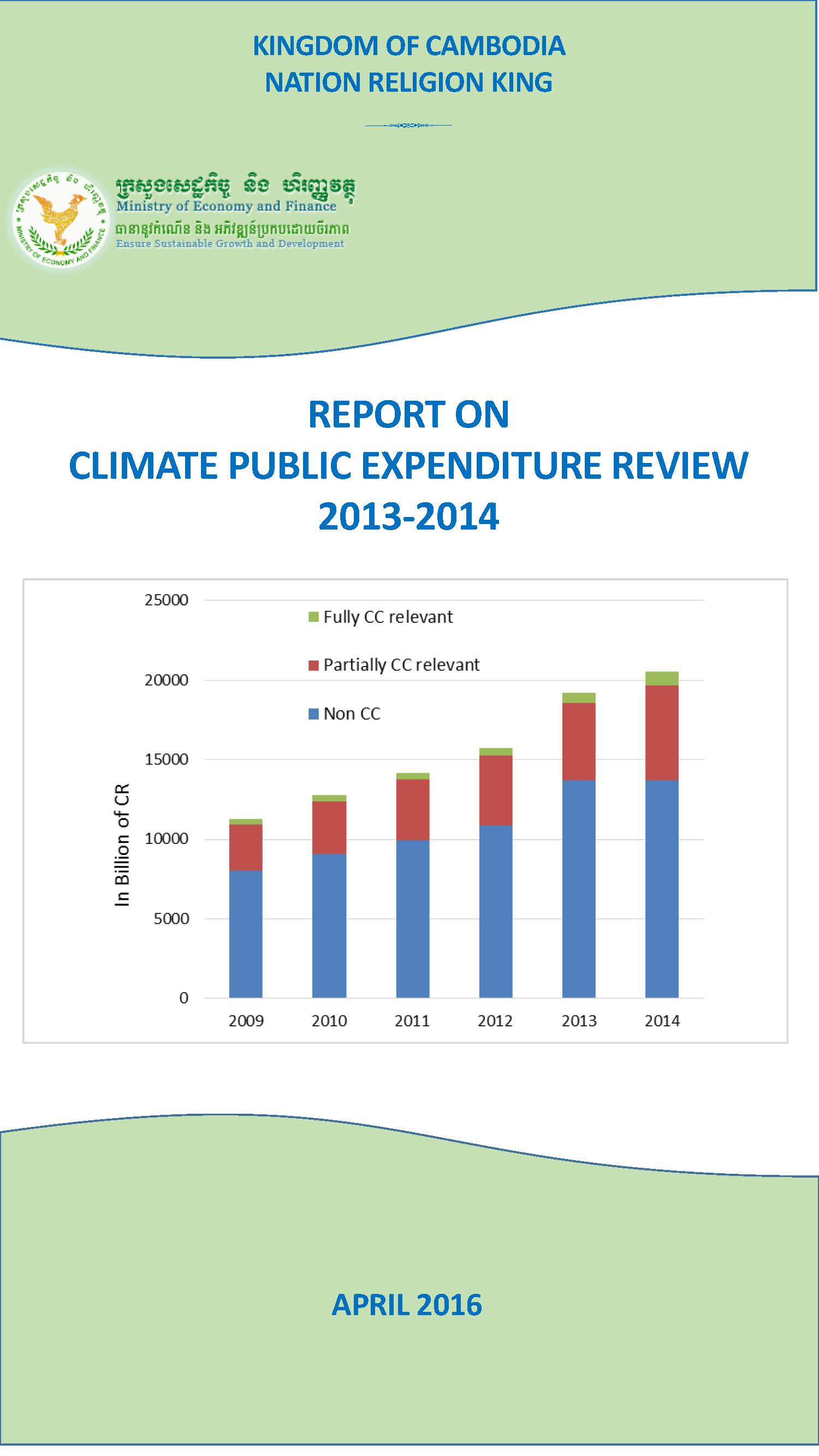 The Cambodia Climate Public Expenditure Review (CPER) report has been developed, with technical support from the National Council for Sustainable Development (NCSD) and Cambodia Climate Change Alliance (CCCA), by the Climate Change Technical Team of Ministry of Economy and Finance (MEF).
The Cambodia Climate Public Expenditure Review (CPER) report has been developed, with technical support from the National Council for Sustainable Development (NCSD) and Cambodia Climate Change Alliance (CCCA), by the Climate Change Technical Team of Ministry of Economy and Finance (MEF).
This review presented the evolution of public expenditure since 2009 and analyzes its alignment with Climate Change Action Plans (CCAPs) in key ministries is part of a broader effort by the MEF to support the Cambodian Climate Change Strategic Plan adopted by the RGC in 2013, and to ensure that climate change, as a cross-cutting priority in the National Strategic Development Plan (NSDP) 2014-2018, is well reflected in public investments and activities on the ground. Key findings are:
- Climate Change expenditure has risen from 0.9% of GDP in 2009 to 1.3% of GDP (CR 847 billion) in 2014.
- Externally funded climate finance increasingly uses national systems and is being channeled through the Ministry of Economy and Finance (MEF).
- Sectoral allocation shows a strong focus on irrigation, climate resilient national and rural roads, representing CR 433 billion or 51% of the total estimated climate spending, followed by 20.7% on disaster response, 16% on climate-resilient livelihoods (including agriculture), 3.4% on health, 1.3% on the energy sector and 1% on disaster risk reduction. The largest spending ministries are Ministry of Water resources and Meteorology (MoWRAM), Ministry of Public Works and Transport (MPWT), Ministry of Rural Development (MRD), Ministry of Agriculture Forestry and Fisheries (MAFF), Ministry of Health (MoH) and Ministry of Environment (MoE).
- Expenditure in 2014 is broadly in line with the sectoral allocation of the CCAPs issued by the 15 key ministries contributing to the climate change response. However, many action plans were launched only in 2014 and 2015, so climate-related expenditure within each sector in 2014 was not yet fully aligned with the priorities expressed in the action plans, and many of the new actions proposed in the plans remain under-funded. This will require more detailed analysis and resource mobilization in each sector.

